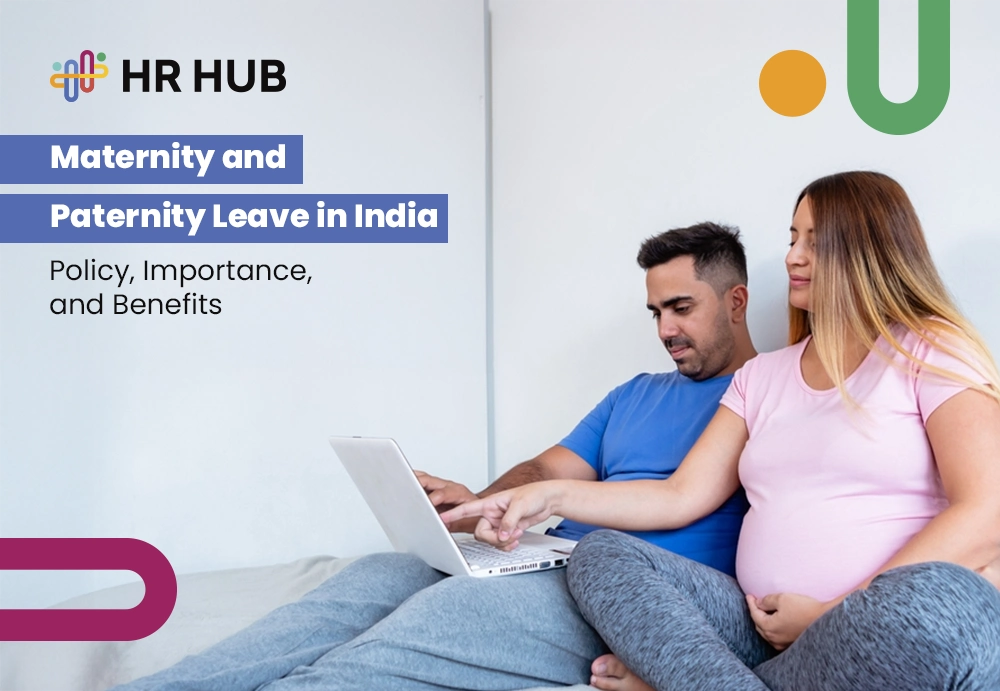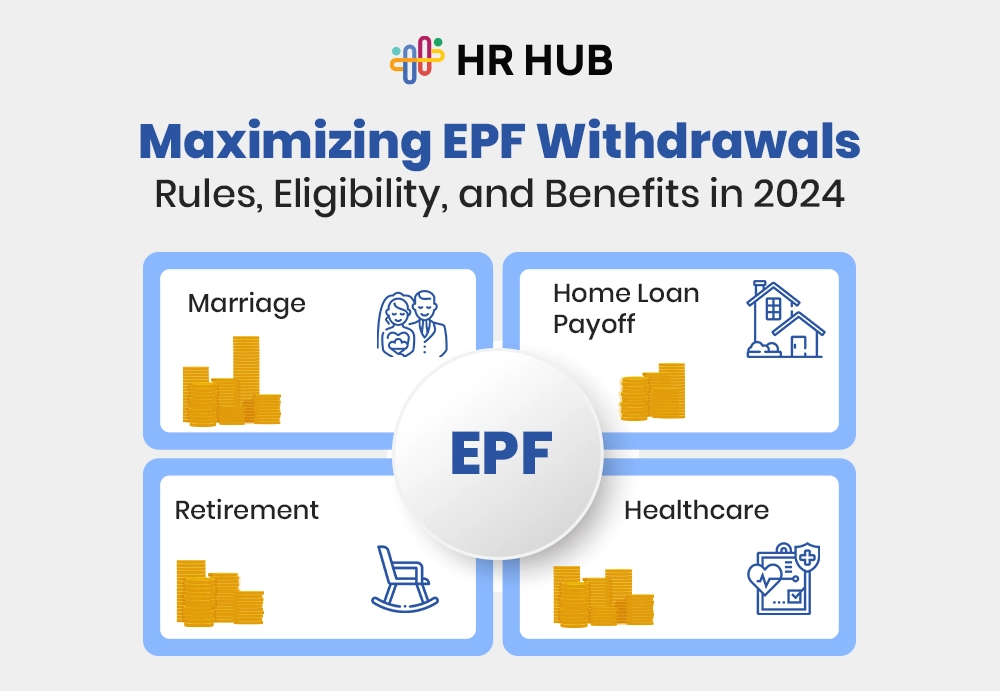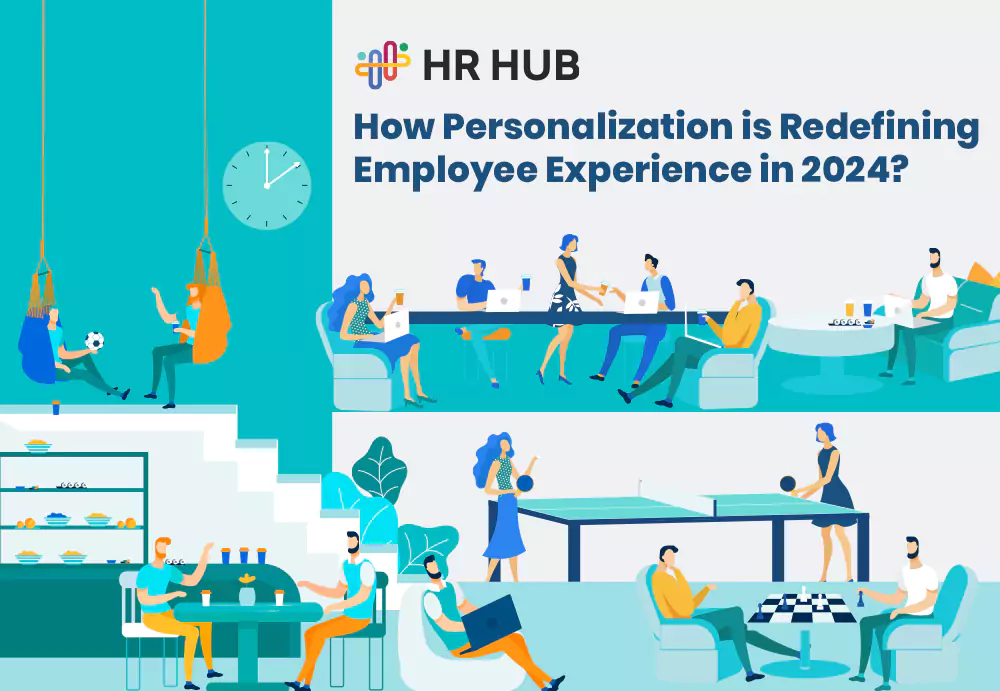Workplaces are constantly changing to be more supportive of the competition a worker has to face at work and home. Leave policies remain highly ranked on the agenda, specifically maternity and paternity leave, significantly enhancing a family-friendly work culture. These are more than corporate checks in the box; they reflect an organizational commitment to employee well-being and equality.
In 2024, companies, especially in India, are reviving these policies to follow the progressive global trend and to suit the cultural and legislative landscape. Let's look at the basics of maternity leave in India, its regulations, and how to implement truly inclusive paternity leave policies in the workplace.
What is Maternity Leave?
Maternity leave is a type of job-protected leave provided to female employees around the time of childbirth. It allows them to take time off work to recover from childbirth and care for their newborn child. The duration and pay of maternity leave can vary by country, organization, and applicable labor laws. Still, it typically includes weeks or months off, often with a portion of the employee's salary paid during this time.
Maternity leave is designed to support the health and well-being of both the mother and child during the early stages of life, and in many places, it is a legal right for eligible employees. Some organizations may also provide additional benefits, such as parental leave or childcare support, to further assist new parents. Now, let us understand what is parental leave in detail.
What is Paternity Leave?
Paternity leave is a type of leave provided to fathers or partners (in the case of a non-birthing parent) to take time off from work following the birth or adoption of a child. The purpose of paternity leave is to allow the father or partner to support the birthing parent, assist with the care of the newborn, and bond with the child.
The duration and compensation for paternity leave can vary depending on the country, employer policies, and local labor laws. In some countries, it is a legally mandated benefit; in others, it may be an optional or discretionary employer offering. Typically, paternity leave is shorter than maternity leave, ranging from a few days to several weeks.
Like maternity, paternity leave promotes family well-being, ensuring parents can be involved in early child-rearing and caregiving. Some companies may also offer additional parental leave policy, including shared or extended leave options for both parents.
Exploring the Importance of Maternity and Paternity Leave
Maternity and paternity leave are crucial for families' well-being and contribute to society's overall health and productivity. Here's why both types of leave are important:
Importance of Maternity Leave
- Physical Recovery: Childbirth is a physically demanding process, and maternity leave allows the mother time to recover from labor and delivery. This is essential for her physical health and well-being.
- Bonding with the Baby: Maternity leave allows mothers to bond with their newborns during the early, formative weeks. This is important for emotional development and attachment between mother and child.
- Breastfeeding and Infant Care: Maternity leave supports breastfeeding, as it enables mothers to nurse their babies during the critical early months and gives them time to adjust to the new demands of infant care.
- Mental Health: The postnatal period can bring emotional and mental challenges. Having maternity leave helps reduce stress and anxiety, supporting mental well-being as the mother transitions to motherhood.
- Gender Equality: Maternity leave helps promote gender equality in the workplace by acknowledging the unique needs of female employees during childbirth. It supports women's participation in the workforce without sacrificing family responsibilities.
Importance of Paternity Leave
- Supporting the Partner: Paternity leave allows fathers or partners to support the mother in recovery and share caregiving responsibilities. This partnership promotes a balanced family dynamic and reduces the burden on the mother.
- Bonding with the Baby: Just as mothers need time to bond with their newborns, fathers or partners also benefit from spending quality time with the baby. This early connection is critical for forming strong emotional bonds and encouraging positive relationships with the child.
- Promoting Work-Life Balance: Paternity leave helps fathers achieve a better work-life balance by allowing them to take time off work and focus on their family. This balance can improve their mental health and increase their productivity when they return to work.
- Encouraging Shared Parental Responsibility: Organizations and governments encourage shared parental responsibility for child-rearing by offering paternity leave. This can lead to more equal distribution of caregiving duties, breaking traditional gender roles and fostering a more equitable family structure.
- Mental Health Benefits: Fathers or partners benefit from having time to adjust to parenthood, reducing stress, and providing the opportunity to manage the emotional challenges of becoming a parent.
Understanding Maternity Leave in India
Indian maternity leave has undergone radical changes and represents a new shift toward more equitable employment practices. A landmark step toward amendment was the Maternity Benefit (Amendment) Act 2017, which positioned India as one of the most liberal countries regarding maternity leave entitlements. Here is a close examination of its key provisions and impact.
Duration and Applicability
- Women employed in organizations with at least 10 employees are entitled to 26 weeks of paid leave for the first two children.
- For the third child and subsequent births, the leave is capped at 12 weeks.
- This rule ensures that first-time mothers, who often face the steepest learning curve, have adequate time to recover and bond with their newborns.
Adoption and Surrogacy
- The Act extends leave benefits to adoptive and surrogate mothers, granting 12 weeks of leave for adopting a child under three months old. This inclusion recognizes diverse family structures and acknowledges the need for early bonding.
Crèche Facilities and Flexibility
- Employers with more than 50 employees must provide crèche facilities and allow four daily visits to the crèche, which include the time spent commuting to the facility.
- Returning to work after maternity leave can be better if women choose flexible working, which can ease that landing.
Despite these advancements, implementation challenges remain. Awareness about maternity leave rules is uneven, particularly in rural and unorganized sectors. Additionally, workplace biases often discourage women from fully utilizing their entitlements due to fears of career setbacks. Bridging this gap requires robust awareness campaigns and proactive employer support.
The Case for Paternity Leave in India
For an Indian, the paternity leave law is still unstructured and patchy in administration across sectors. Currently, the Central Civil Services (Leave) Rules, 1972, give government employees 15 paid days of paternity leave. This does not meet the international standard.
Most private sector organizations lack a uniform policy regarding paternity leave, leaving most fathers without sufficient time for first-time childcare.
Why Paternity Leave Matters?
- Shared Responsibilities: Modern parenting calls for shared responsibilities in raising a child. Paternity leave encourages fathers to participate more actively in the newborn's childcare in its critical early weeks.
- Support for Mothers: Post-delivery, new mothers face physical and psychological challenges. A supportive partner may smooth out this transition so the mother can heal and focus on the newborn.
- Bonding Time: It gives children a bonding opportunity with the father, an action proven to strengthen family ties.
Challenges in Adoption
- Cultural Stigma: Traditional Indian society often views childcare as primarily a mother’s role, discouraging men from taking leave even when available.
- Lack of Awareness: Most Fathers across smaller towns do not know their rights or are scared to ask employers to take off paternity leave.
Best-in-class organizations like Zomato and Novartis set trends by offering 10-26 weeks of paid paternity leave. They help families and, in turn, position themselves as future visionaries in the job market who believe in equality between men and women.
Challenges in Implementing Family-Friendly Leave Policies
The concept of family-friendly leave policies is catching much steam these days, but their working and implementation remain pretty challenging in India:
Cultural Barriers
- Deeply ingrained gender roles often discourage men from taking paternity leave and women from using their full entitlement to maternity leave.
- In some cases, women may pressure themselves to return to work even earlier so they do not appear less committed to their careers.
Policy Awareness
- There is even less awareness regarding maternity and paternity leave rules, especially among employees in the unorganized sector or smaller businesses. Employers might not be adequately informed of their responsibilities under the paternity leave rules or policy.
Financial Strain for Small Businesses
- Small organizations cannot absorb the cost of paid leave and must find substitute staff to replace the employee on maternity leave.
Workplace Bias
- Sometimes, mothers returning from maternity leave experience indirect or overt discrimination when they are excluded from key projects or overlooked for challenging positions.
- Paternal leave takers are also regarded as less committed or ambitious; hence, they do not take much of this benefit.
Organizations must invest in awareness campaigns, foster a supportive workplace culture, and explore opportunities to exploit government incentives for smaller businesses to adopt these policies.
Benefits of Family-Friendly Leave Policies
Compliance with good maternity and paternity leave policies is good; however, it is about being healthier, more engaged, and more productive at work. Here are the key benefits:
- Improved Employee Retention: Employees prefer to stay with organizations if their personal needs are met. Family-friendly policies ensure loyalty and attrition; companies retain great recruitment and training costs.
- Enhanced Productivity and Concentration: Employees can focus and become more productive at work because they have been supported in their personal lives. Reduced stress related to balancing work and family responsibilities enhances performance.
- Attracting Top Talent: This will attract the right talent to your organization. In a competitive job market, employees favor organizations with progressive leave policies. Top talent, millennials, and Gen Zers choose their workplaces based on work-life balance.
- Promoting Gender Equality: Equal leave opportunities for both parents encourage shared caregiving responsibilities, breaking down traditional gender roles. This creates a more inclusive work environment where both men and women can thrive.
- Improved Employer Brand: Companies that care for their workforce have a sympathetic and positive image of employers. This leads to recruitment and reputation among customers and stakeholders.
Global Trends Influencing Indian Policies
India can draw inspiration from countries excelling in family leave policies. For instance:
- Sweden: Parents are entitled to 480 leave days, shared between both partners.
- Norway: Fathers must take at least 10 weeks of parental leave allocation.
- Germany: Offers up to 14 months of paid leave, encouraging equal caregiving roles.
By observing these global benchmarks, Indian policymakers and organizations can design innovative maternity and paternity leave frameworks tailored to cultural and economic realities.
The Role of HR HUB in Strengthening Leave Management
A leading HR management platform, HR HUB simplifies maternity and paternity leave management. Its features ensure full compliance with the maternity leave rules, thus making leave tracking, approvals, and records seamless. With HR HUB, one can:
- Automate leave workflows for enhanced efficiency.
- Ensure parental policy compliance to avoid disputes.
- Provide transparency to employees about their leave entitlements.
When HR HUB is in their system, businesses will be able to focus more on making the workplace family-friendly without being swamped by administrative complexities.
Fostering Family-Friendly Workplaces: A Collective Responsibility
Family-friendly workplaces should not even be an aspiration for 2024 but a norm. This change must start with workable maternity and paternity leave policies. Hence, employer, policymaker, and employee cooperation will significantly define such policies and facilitate proper implementation.
With the comprehensive solution offered through HR HUB, such family-friendly practices can easily be implemented within companies. A workplace that considers the family's needs has an ethical edge and is strategic for long-term success among employees and businesses.







